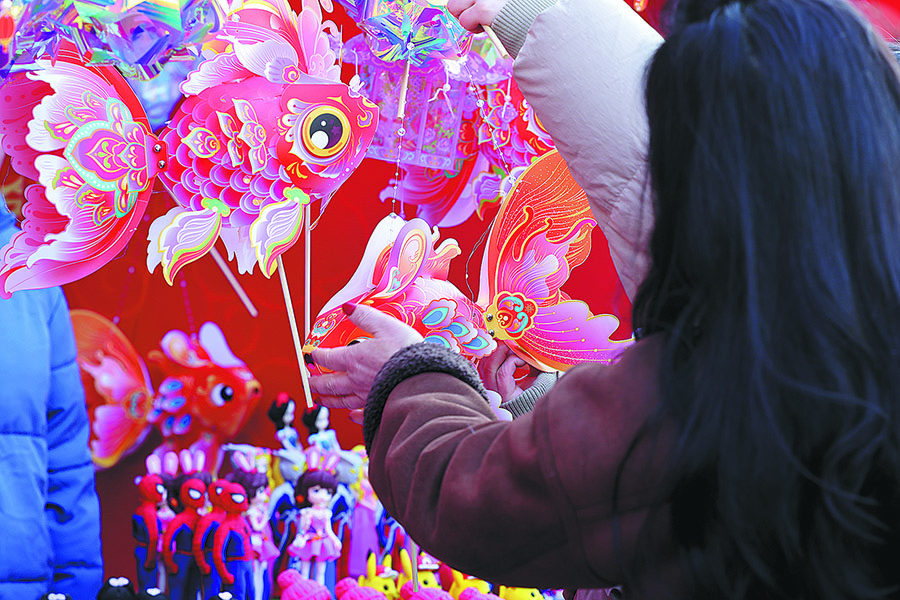

Because temple fairs have long been grounded in popular culture, another stage provided a platform for aspiring and emerging artists to demonstrate their talent, from acrobatic performances to innovative folk music.
The fair has also dug into the history of Ditan Park. Known in English as the Temple of Earth, the park was built during the Ming Dynasty (1368-1644), and was where the emperors made sacrifices to the God of Earth to pray for national stability and bountiful harvests.
Every morning, the temple fair presented a performance that revived these ancient rituals, in line with the procedures recorded in texts from the Qing Dynasty (1644-1911).
This year, the fair included a "guest province" section for the first time, with Hebei invited to showcase its wealth of folk customs.
"We hope to promote the coordinated development of the Beijing-Tianjin-Hebei region through our temple fair," Xu says.
In this special section located in the northern area of the park, Hebei presented a variety of folk performances, snacks and specialties, and intangible cultural heritage displays.
One particularly popular stall sold donkey meat burgers from Baoding, Hebei, a local specialty made with stewed shredded donkey meat in roasted, crispy buns. The technique involved in its making is recognized as a provincial-level intangible cultural heritage project.